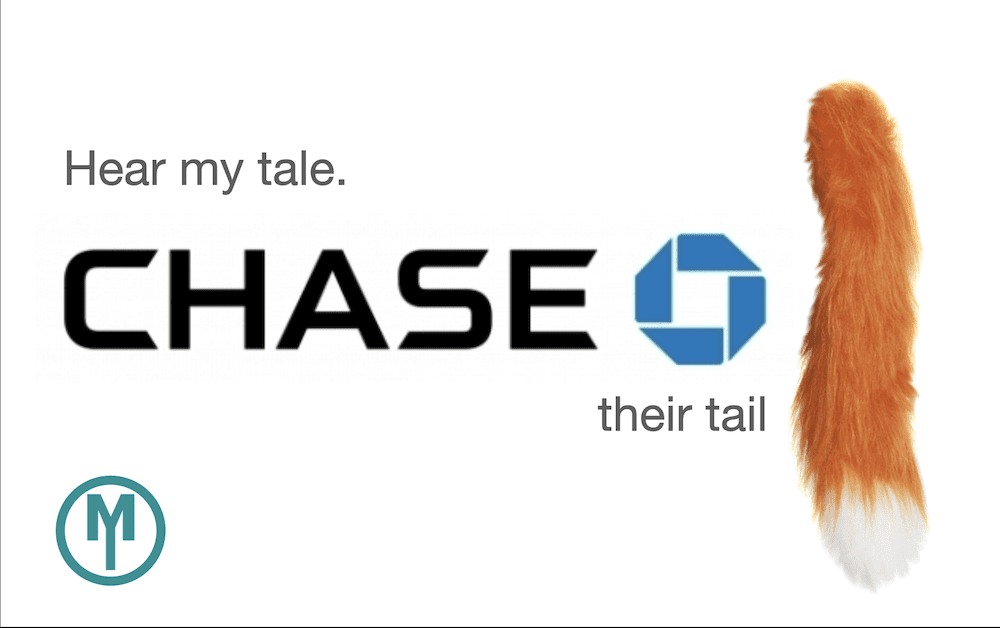Have you ever been locked out of your own money by the very institution that’s supposed to protect it? Welcome to my recent experience with Chase Bank – a frustrating saga that perfectly illustrates how excessive security measures can become the ultimate enemy of customer service. Having been a customer of Chase bank since 1987 (back when it was independent, predominantly New York-based, and called Chase Manhattan Bank), you’d have thought they wouldn’t need to make me jump through endless hoops, lock me out thrice, and still block my transaction. Now owned by JP Morgan, the name “Chase” has taken on a new meaning: you must chase them to get anything done.
The Security Theatre That Ate My Time
What should have been a simple transaction to send money to a legit business turned into a nine-call marathon of verification hell. Each call, that I estimate took around 30 minutes on average, required me to prove my identity through a very similar and time-consuming routine. Each handoff requires starting the entire verification process from scratch, as if previous verifications evaporated into thin air. It’s security theatre at its most absurd – lots of activity, zero efficiency.
The process was maddening: keypunching my card number, followed by automated PIN verification, calls to “verification agents,” poor-quality VOIP connections, and an endless loop of security protocols. By the third call, I could recite their script verbatim. By the sixth, I was questioning my sanity. By the ninth, I realised I was trapped in Chase Bank’s security theatre – all process, no results.
When Protection Becomes Persecution
My experience mirrors countless other Chase customers who have found themselves caught in similar verification nightmares. The bank’s identity verification system has become notoriously problematic, with customers reporting being unable to complete basic transactions despite multiple attempts to prove their identity. One customer described Chase’s identity verification as “a disaster,” facing contradictory responses and endless loops of documentation requests {Source: Reddit}.
The irony is palpable: Chase markets itself as having sophisticated fraud monitoring that protects customers 24/7, yet their own security systems have become the primary obstacle preventing legitimate customers from accessing their own money. It’s protecting itself against us! Their “Zero Liability Protection” sounds great in theory, but what good is protection from unauthorised charges when you can’t authorise your own legitimate transactions?
The Human Cost of Automated Paranoia
Chase’s approach underpins a fundamental misunderstanding of customer service. Recent data shows that bank customer satisfaction has remained flat while trust in financial institutions has declined significantly {Source: JD Power}. Unexpected fees, poor customer service, and excessive security measures are identified as key threats to customer trust. Chase appears to be checking all these boo-hoo boxes.
The bank’s own customer satisfaction claims paint a rosy (and warped) picture – they report “record customer satisfaction” and that four in five customers would recommend them. {Source: Customer Experience Dive} Yet these statistics seem disconnected from the reality experienced by customers like me caught in their verification loops. The company’s 95% customer retention rate might simply reflect the hassle of switching banks rather than genuine satisfaction. In my case, so far, it’s been about lethargy. But I’m now in the throes of looking for a new, more digitally keen bank.
A System Designed to Frustrate
What makes this particularly infuriating is Chase’s complete lack of awareness about the customer experience they’re creating, despite spewing out post-call surveys! These surveys probably get sent to a curation centre and/or a black hole. Their agents – all offshore, and predominantly in India I believe — have “ZERO agency” to actually solve problems – they’re merely cogs in a bureaucratic machine designed to protect the bank at all costs. All the agents I spoke with remained calm and tried to placate me. They each seemed to come with great intentions, saying “I’m here to help you” and “I’ll do my best to…” I was met with apologies and promises that “this will only happen once”… Yet, the cycle continues. I truly pity the poor customer service agents involved.
The Cover-Your-Assets Banking Model
Chase’s approach embodies what I call the “Cover Your Ass” banking model – every procedure is designed to protect the bank from liability, regardless of the customer experience. While financial institutions face real fraud challenges and regulatory requirements, Chase has swung so far toward paranoia that legitimate customers become suspects in their own financial lives.
The bank’s recent legal troubles underscore this dysfunction. The Consumer Financial Protection Bureau has repeatedly taken action against Chase for various failures, including a $4.6 million penalty for problems with checking account screening information. They’ve been sued alongside other major banks for failing to protect consumers from fraud on payment platforms like Zelle, yet they subject their own customers to excessive verification for basic transactions.
When Banks Forget Who They Serve
My nine-call ordeal ended without success. The transaction was never approved despite hours of my time and flawless verification of my identity. This outcome perfectly encapsulates Chase’s priorities: their process mattered more than my needs as a customer. They were so focused on avoiding potential liability that they forgot their primary job is serving customers, not interrogating them.
Other customers share similar frustrations, with many reporting having to make multiple calls for basic services, facing contradictory information from different representatives, and being unable to reach knowledgeable human agents. The bank’s phone system seems designed to discourage rather than assist, with customers reporting difficulty even finding current customer service hours.
The Path Forward: Demanding Better
Chase Bank needs to fundamentally reconsider their approach to customer service and security. They sent me a survey post-factum, where I excoriated them. I doubt I’ll ever get any response back from. Nor will it likely have ANY impact on them. Their senior team should all experience what it’s like to be a “banal” customer. That would surely wake them from their slumber. What is the customer experience they want? Which are the customer segments they are targeting? Security should protect customers, not punish them. Verification should be efficient, not exhaustive. And customer service should solve problems, not create them.
Until Chase recognises that excessive security can be just as damaging as insufficient security, customers like me will continue to suffer through their verification marathons. In the meantime, I’m seriously considering whether it’s time to find a bank that trusts its customers as much as it asks to be trusted.
For anyone facing similar issues with Chase, document everything, escalate through their executive complaint process (Executive.office@chase.com), and consider filing complaints with the Consumer Financial Protection Bureau. It’s time banks remembered that customers are not the enemy – we’re the reason they exist.
The bottom line: Chase Bank’s security measures have become so excessive that they actively harm the customer experience. When a bank makes it nearly impossible for legitimate customers to use their own money, the security system has failed its primary purpose. It’s time for Chase to fix their process before they lose customers who simply can’t afford to waste nine phone calls on a single transaction.












‘…promises that “this will only happen once”’
This.
Chase is truly the worst. I call their Fraud department and verbally communicate anticipated travel and large expense for my Son’s wedding, and what do the do, they decline charges all week making the reason to again never use their credit card. Their Fraud dept is argumentative and they say one thing and do the opposite. Never again!
They refused to transfer 6 figures to the same brokerage account in my own name that I had used before and which populated on their own website. How could that be the fraud that they claimed? They just wanted to prevent me from moving out my funds. It took 5 days and going into the branch to get my money. They demanded to know why I closed my investment account. When I said in response to reading about Chase facilitating Jefffrey Epstein’s pedophila, they closed all my accounts without notice after I had been a customer for many decades. This is a corrupt and uncaring bank that cannot be trusted.They caused me financial havoc and incredible stress. Get your funds out while you can!
They can’t even help you with something as simple as allowing access from a new device. They insist on a phone call to give you a code, but THEN ask you not only for your card # but your SS#. No thank you. SS#s were never meant for ID.
Did you ever find an ethical bank (or credit union)?
I’m deaf, it’s a hassle for me to understand these customer service representatives in India! their accents drive me crazy. In their defense, my wife is Filipino, and I can’t understand her most of the time because of her heavy accent. So if it’s really important, we text each other.
My biggest beef, is Chase denies purchases that I make from home, and let crazy things debit my account. which gets hacked constantly! I’ve probably gone thru 50 debit cards, in the past 2 years. I’m an OTR truck driver, I need the card while I’m on the road. I asked customer service to expedite a new card, which they promised to do, with a refundable fee of 15 dollars. the date they promised to have the replacement card came and went and a call to customer service, was a complete waste of time. the rep argued with me about my request and stated that the new card would take another week.
I’ve had it with Chase! This bank is the absolute worst!!!
It’s a hassle, but I’m going to a different financial institution!!!!!
I’m sorry to hear of your issues Joseph. I like to say we ALL have accents. However, reality is that it is on the customer service team to be appropriate for the customers they serve!